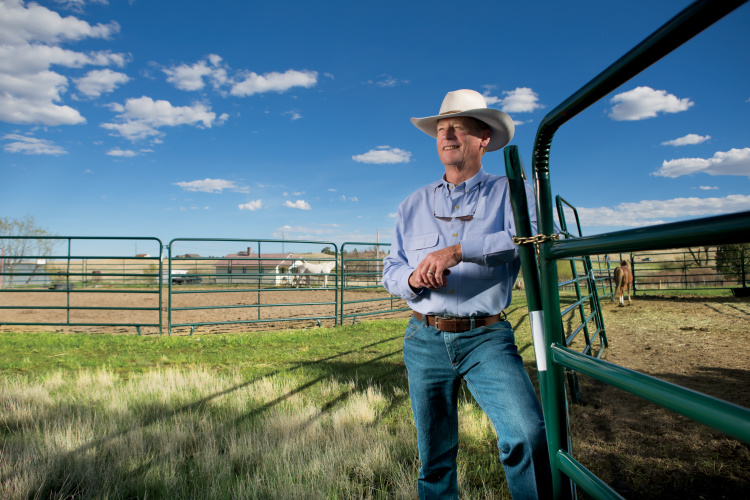Home > Colorado > Colorado Crops & Livestock > How Colorado’s Brand Inspection Division Protects Livestock
How Colorado’s Brand Inspection Division Protects Livestock
In partnership with: Colorado Department of Agriculture

Almost like a secret code, livestock branding uses its own language to declare ownership and deter thieves. That’s as true today as it was in the Old West.
The Colorado Brand Inspection Division’s storied history dates back to 1865 when investigators traced altered livestock brands and tracked cattle rustlers, as well as missing livestock, which included cattle, calves, horses, mules, donkeys and burros.
The Division, which became a state agency in 1903 and part of the Colorado Department of Agriculture in the 1970s, is still charged with deterring theft and locating missing livestock. However, its day-to-day activities also focus on assisting livestock commerce.
Branding animals can be traced back to ancient Egypt and Spain. Today, brands are registered like trademarks and remain a critical element in the cattle industry.
Each year, thousands of head of livestock are sold at Colorado’s 27 livestock markets, which are licensed by the Brand Inspection Division. All livestock at those markets are inspected before sale to verify ownership. That protects buyers and sellers, as well as lenders underwriting purchases.
Methods of branding include the traditional hot-iron application and newer freeze branding that uses a super cold iron. Even tattooing and microchips are in use to protect ownership.

Wide-Ranging Inspection
Nearly 70 brand inspectors, supervisors and staff form the foundation of Colorado’s livestock industry. “Brand inspectors verify animal ownership before that ownership changes by sale or gift,” Colorado Brand Commissioner Chris Whitney says.
“Livestock ownership must also be verified before animals are transported over 75 miles within Colorado, any transport out of state, and transport to sale or slaughter. If you have a trailer full of livestock, the inspection certificate issued by the Brand Inspection Division is the proof of who owns those animals,” Whitney says.
The Brand Inspection Division also administers the state’s certified feedlot program. Feedlots are approved operations in the state that grow and finish animals. When leaving the feedlot for processing, the animals must have a current brand inspection certificate. In addition, the Division licenses and certifies elk and fallow deer facilities. Fallow deer are an exotic species raised in North America for their excellent meat.
Brand inspectors also are present at rodeos and livestock exhibitions. “At the National Western Stock Show and Rodeo in Denver, inspectors are there when inspection is required,” Whitney adds.
Additionally, the Division researches, authorizes and maintains records of nearly 33,000 brands registered by livestock owners in Colorado. The earliest brand on file is from 1899. Brands not only support livestock commerce and investigations, they help preserve Colorado’s heritage.
“Some Coloradans wish to maintain a livestock brand associated with a ranch or family even if they are no longer branding livestock,” Whitney says.
Making Improvements
All Brand Inspection Division duties are connected by the agency’s historical task of verifying livestock ownership.
“The basic business of buying and selling livestock – taking livestock to market – hasn’t changed dramatically in the last century,” Whitney says. “Our job to verify livestock ownership hasn’t changed. But some of the tools we use to do the job are changing.”
Electronic records are one way the Division is moving brand inspections into the future.



